Wind energy is rapidly gaining attention as a sustainable source of power, and offshore wind farms play a significant role in this movement. As you explore the benefits and drawbacks of these installations, you may encounter various factors influencing their feasibility, efficiency, and environmental impact. Understanding these aspects can help you make informed decisions about renewable energy investments and policy support. For detailed insights, check out What are the advantages and disadvantages of offshore ….
Key Takeaways:
- Renewable Energy Source: Offshore wind farms provide a significant source of clean, renewable energy, helping to reduce reliance on fossil fuels.
- Environmental Impact: While they produce green energy, potential threats to marine ecosystems and bird species must be considered during planning and implementation.
- High Initial Costs: The installation of offshore wind farms requires substantial upfront investment, including technology and infrastructure development.
- Job Creation: These projects can stimulate local economies by creating jobs in manufacturing, installation, and maintenance sectors.
- Maintenance Challenges: Harsh marine conditions make maintenance procedure complex and costly, potentially affecting the long-term viability of wind farms.
Overview of Offshore Wind Farms
Before you consider the potential of offshore wind farms, it’s vital to recognize their role in the renewable energy landscape. These energy systems harness the power of wind located far off coastlines to produce clean energy. With an increasing number of countries investing in this technology, offshore wind farms offer unique advantages and challenges that impact energy production, environmental factors, and economic viability.
Definition and Technology
At the heart of offshore wind farms is the wind turbine technology that captures wind energy and converts it into electricity. These turbines are typically larger than their onshore counterparts, allowing them to generate more power. They are mounted on foundations secured to the seabed, enabling them to withstand harsh marine conditions and optimize energy output throughout the year.
Current Global Trends
Beside technological advancements, the offshore wind energy sector is witnessing rapid growth worldwide. You may notice an increase in investments and projects in various countries as governments recognize the benefits of sustainable energy sources. Many nations are setting ambitious targets to expand their renewable energy portfolios, with offshore wind farms at the forefront of these initiatives.
With global investments in offshore wind energy surpassing historical records, many nations are racing to establish themselves as leaders in this sector. Countries like China, the United States, and those in Europe are committing significant resources to enhance their offshore wind capabilities. You can expect to see larger turbines and more sophisticated technology emerging, leading to increased efficiency and lower costs. The shift towards green energy in response to climate change concerns further propels this industry, making it a vital component of your energy future.
Advantages of Offshore Wind Farms
It is imperative to recognize the numerous advantages that offshore wind farms offer for sustainable energy production and environmental protection. By harnessing the natural wind patterns over oceans, you can benefit from a more consistent power source compared to land-based wind farms, enabling a significant reduction in reliance on fossil fuels. These farms not only contribute to cleaner energy generation but also support the transition towards a more sustainable future.
Renewable Energy Generation
Farms located offshore can generate vast amounts of electricity due to the stronger and more stable winds found at sea. This renewable energy source helps reduce carbon emissions, playing a vital role in combating climate change while providing a sustainable and dependable energy supply for your needs.
Economic Benefits
Any investment in offshore wind farms can lead to considerable economic growth in coastal communities. As these projects require skilled labor for construction, operation, and maintenance, they create numerous job opportunities, stimulating local economies and fostering a shift towards green energy industries.
This growth also carries the potential for increased energy independence and security, reducing your dependence on imported fossil fuels. The development of offshore wind projects can attract investment, benefiting local businesses and raising revenues through taxes and lease agreements. As demand for renewable energy continues to rise, investing in offshore wind farms can significantly enhance the economic landscape of your community.
Environmental Impact
Impact on marine ecosystems can be a concern; however, offshore wind farms can actually promote biodiversity by creating artificial reefs and habitats for various marine species. By generating cleaner energy, you contribute to reducing pollution and protecting the environment.
Even when evaluating the potential disruptions during construction, the long-term benefits far outweigh these concerns. By lowering greenhouse gas emissions and providing a sustainable energy source, offshore wind farms play a significant role in mitigating climate change and preserving your oceanic and coastal ecosystems for future generations.
Challenges of Offshore Wind Farms
After examining the benefits of offshore wind farms, it’s important to also consider the challenges they face. Factors such as high initial costs, technological limitations, and environmental concerns can impact the feasibility and efficiency of these renewable energy sources. Understanding these challenges helps you weigh the potential benefits against possible setbacks.
High Initial Costs
Below the surface, the investment required for offshore wind farms can be significant. The costs associated with installation, maintenance, and infrastructure development can deter potential investors, despite the long-term benefits of renewable energy.
Technological Limitations
Offshore wind farms face various technological limitations that can hinder their effectiveness. These include challenges related to turbine design, energy storage, and grid integration, which can complicate energy distribution and increase operational costs.
Another key issue is the ongoing development of technologies that can withstand harsh offshore conditions. Turbines must be resilient against high winds, saltwater corrosion, and marine life interference. Investing in improved technology is vital for maximizing efficiency and harnessing the full potential of offshore wind resources.
Environmental Concerns
With increased attention on the environmental impact of energy production, offshore wind farms are not without their concerns. Issues such as noise pollution, effects on marine ecosystems, and potential disruptions to local fishing industries must be carefully considered.
Plus, the construction and operation of these farms can disrupt wildlife habitats and alter natural landscapes. It’s important to undertake thorough environmental assessments and engage with local communities to address these concerns and promote sustainable practices.
Regulatory and Policy Framework
Once again, understanding the regulatory and policy framework surrounding offshore wind farms is important for assessing their viability. This framework includes national, regional, and local regulations that dictate where and how wind farms can be built. You should familiarize yourself with the laws guiding environmental assessments, safety standards, and community impact. Navigating these regulations effectively can significantly influence the success of your offshore wind project.
Government Incentives
Among the various factors influencing offshore wind farms, government incentives play a significant role. Your project could benefit from tax credits, grants, and subsidies that make installation and maintenance more financially viable. These incentives not only lower initial costs but can also enhance the return on investment, making offshore wind a more attractive option for your energy portfolio.
Permitting Processes
An awareness of the permitting processes is vital when planning your offshore wind farm. These processes can vary widely based on location and regulatory bodies, requiring multiple permits before construction can begin. Engaging with local and national authorities early on can streamline your project’s timeline and reduce the risk of delays due to regulatory issues.
Incentives for completing permits include expedited reviews and reduced fees for projects that meet specific environmental and community standards. You should prepare comprehensive documentation, which may involve environmental impact assessments and stakeholder consultations, to comply with permitting requirements. Staying informed about the permitting landscape can greatly facilitate your wind farm’s approval process and help you avoid potential pitfalls that may arise from inadequate planning.
Case Studies of Offshore Wind Farms
For a clearer understanding of offshore wind farm effectiveness, consider the following case studies showcasing their impact through numbers and data:
- Hornsea One, UK: The world’s largest offshore wind farm, with a capacity of 1.2 GW, providing energy for over one million homes.
- Gemini, Netherlands: A 600 MW facility that powers 785,000 households, reducing CO2 emissions by 1.25 million tons annually.
- Block Island, USA: The first offshore wind farm in the U.S. at 30 MW, offsetting 40% of the island’s energy needs.
- Moray East, Scotland: A 950 MW project expected to power approximately 950,000 homes and achieve zero-emission electricity generation.
Successful Implementations
For projects that have thrived, Hornsea One stands out as a prime example, demonstrating how large-scale offshore wind installations can meet significant energy demands while bolstering local economies and jobs.
Lessons Learned
Above all, the development of offshore wind farms has taught you the importance of strategic planning and stakeholder engagement in maximizing benefits while minimizing environmental impact.
At each stage of offshore wind farm projects, various challenges emerged that ultimately provided valuable insights. For instance, early projects faced operational interruptions due to logistical issues, leading to the realization that thorough risk assessments and contingency plans are necessary. Additionally, engaging with local communities ensured better acceptance and support for projects, which is vital for their long-term viability. By understanding these lessons, you can better appreciate how future offshore wind initiatives may evolve and improve in efficiency and sustainability.
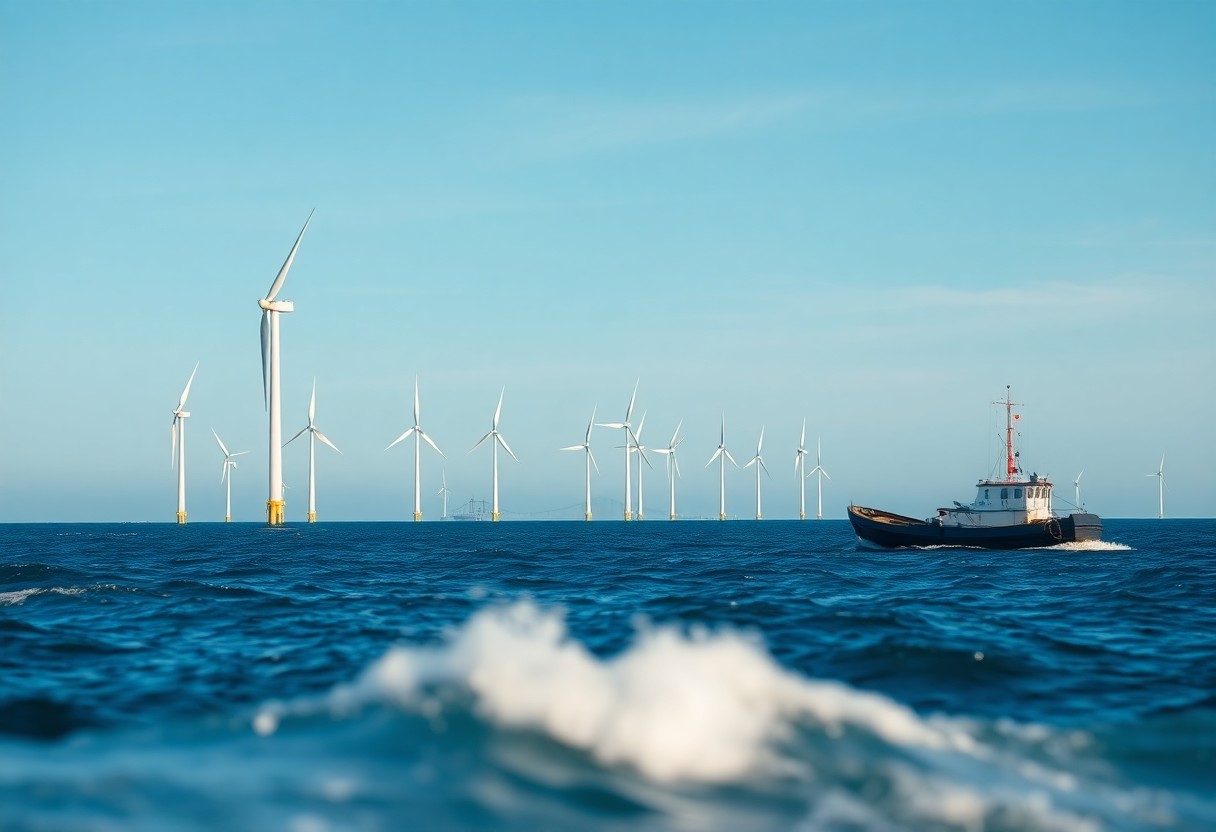
Future of Offshore Wind Energy
Unlike traditional energy sources, offshore wind energy is rapidly evolving and holds tremendous promise for a sustainable future. As technological advancements and increased investments drive this sector, you can expect to see a more robust and resilient energy infrastructure that can meet your growing energy demands while minimizing environmental impact.
Innovations and Trends
An exciting array of innovations in offshore wind technology is emerging, such as floating wind turbines and improved energy storage solutions. These advancements are designed to enhance efficiency and reduce costs, enabling you to benefit from clean energy generated more efficiently while promoting environmental sustainability.
Potential for Growth
The offshore wind energy sector is poised for remarkable growth over the next decade, with a significant increase in installed capacity expected worldwide. You have the opportunity to be part of this exciting transition as governments and private enterprises accelerate their commitment to renewable energy sources.
At the forefront of this growth are ambitious national targets and increasing public awareness of climate change. You can engage with local advocates and organizations that support offshore wind developments, which may lead to job creation in your community and contribute to energy independence. With investments in infrastructure and technology, offshore wind can significantly reduce reliance on fossil fuels, promoting a cleaner, sustainable future for generations to come.
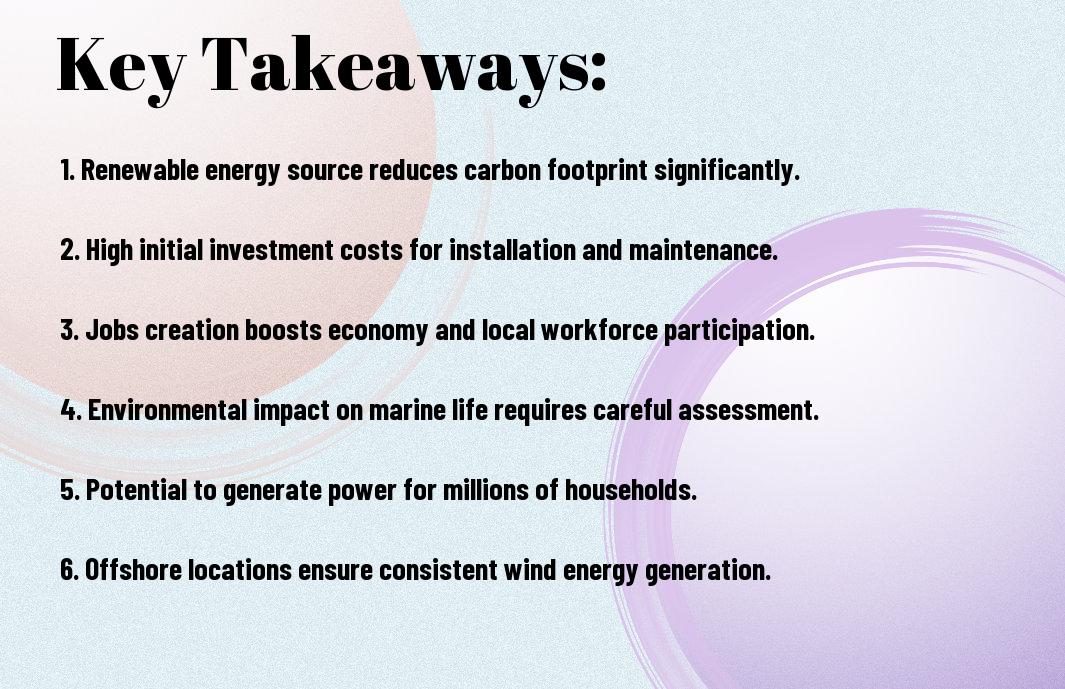
Conclusion
From above, you can see that offshore wind farms present a mix of benefits and challenges. On one hand, they offer a sustainable energy source with minimal land disruption and significant job creation. On the other hand, you must consider potential environmental impacts, high initial costs, and complex logistics involved in installation and maintenance. Weighing these pros and cons can help you make informed decisions about the future of renewable energy in your community and beyond.
Q: What are the main advantages of offshore wind farms?
A: Offshore wind farms offer several advantages, including the potential for higher energy production due to stronger and more consistent wind speeds found at sea. These farms can contribute significantly to reducing greenhouse gas emissions, as they harness renewable energy without emitting pollutants. Additionally, offshore wind farms typically have a smaller physical footprint on land, preserving terrestrial ecosystems and allowing for other uses of coastal land.
Q: What challenges do offshore wind farms face?
A: While offshore wind farms have many benefits, they also encounter several challenges. The initial investment and maintenance costs tend to be significantly higher than onshore projects due to the complex logistics of installing and servicing turbines in marine environments. Weather conditions can impede construction and maintenance, potentially leading to project delays. Additionally, there are concerns regarding the impact on marine ecosystems, fishing industries, and navigation routes that must be addressed during planning and operation.
Q: How do offshore wind farms impact local economies?
A: Offshore wind farms can positively impact local economies through job creation and investments in infrastructure. They often create new opportunities for skilled labor in manufacturing, installation, and maintenance of turbines. Moreover, the increase in renewable energy projects can stimulate local businesses and services. However, some local communities may express concerns about changes to the landscape and tourism, which could affect their economy. Balancing these aspects is necessary for maximizing the benefits of offshore wind energy.
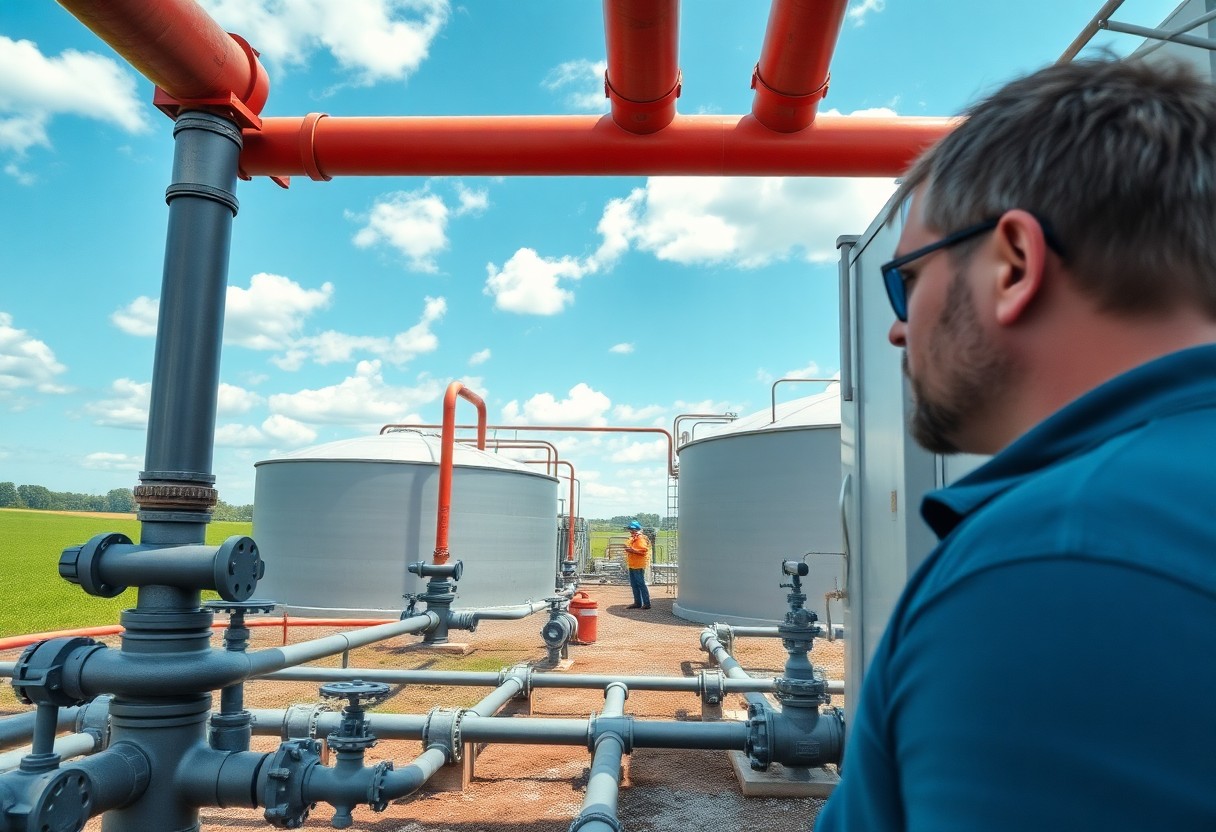
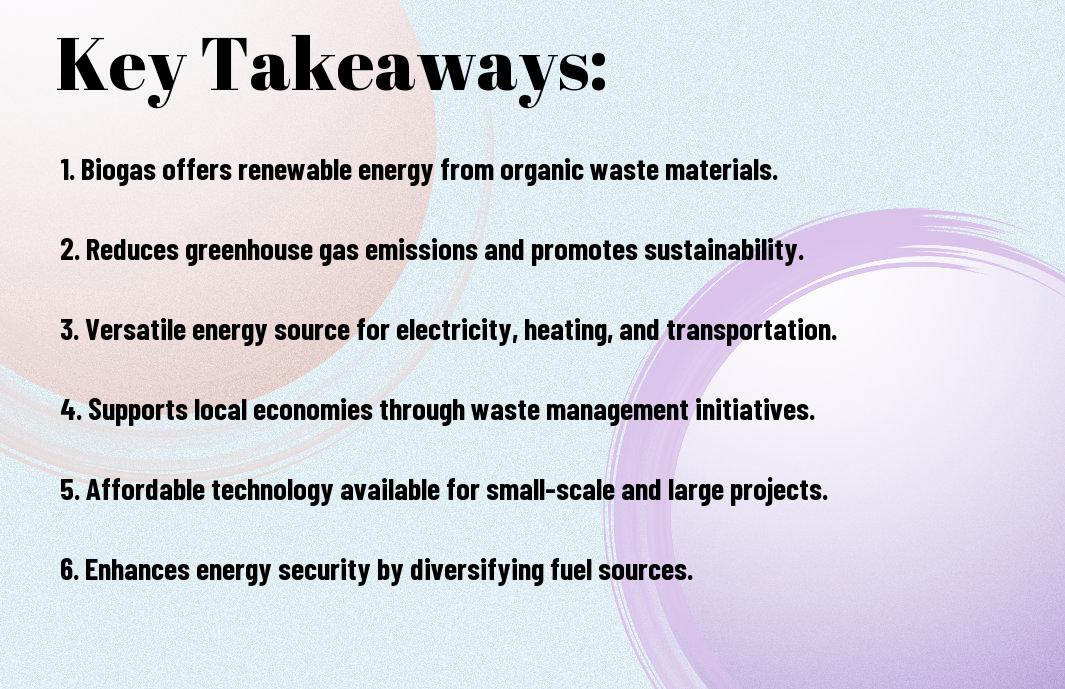
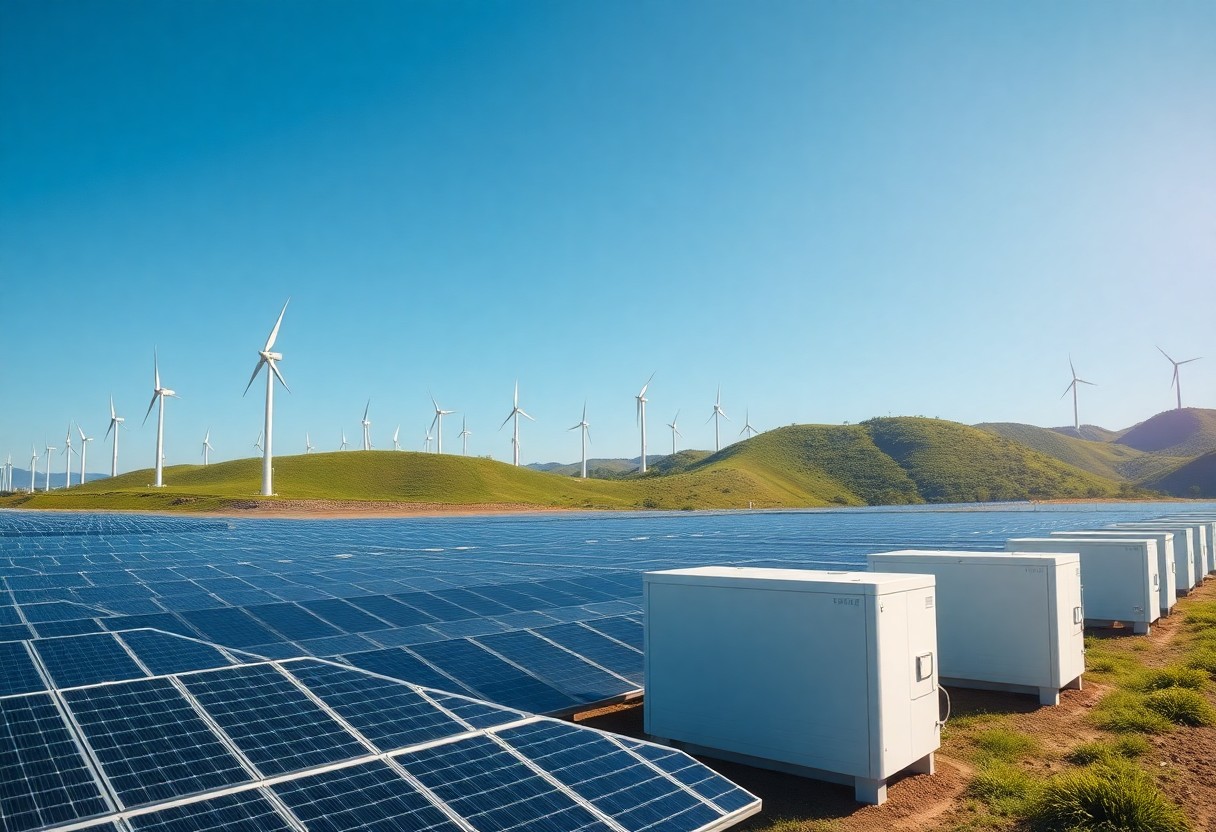
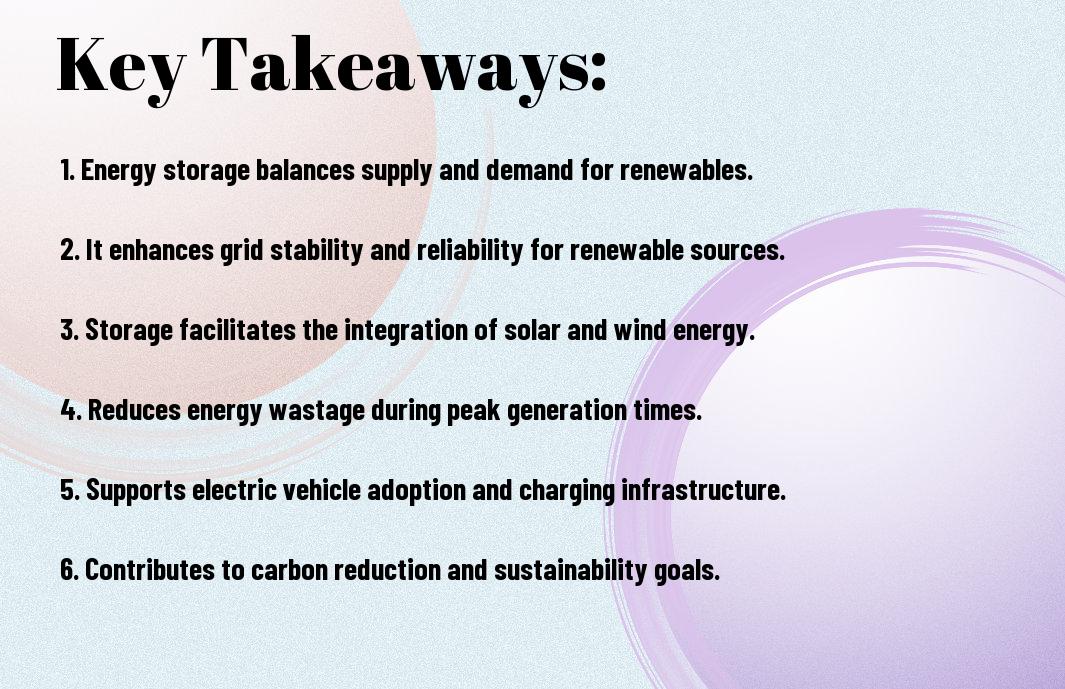
Recent Comments